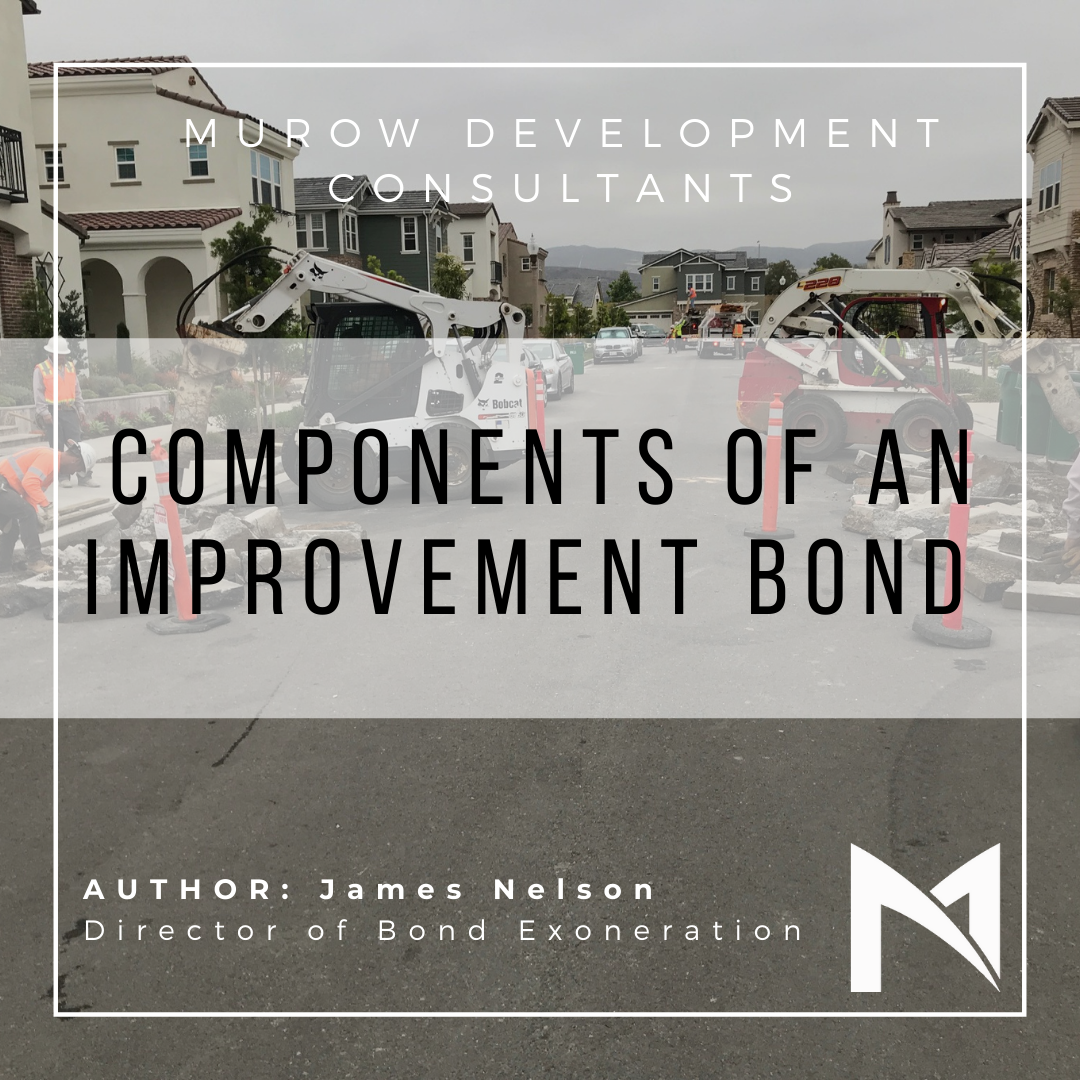When people typically think of an improvement bond they think it is solely in place for the purpose of getting the bonded scope of work completed to the satisfaction of whichever agency is the holder of the bond (also known as the “obligee”). This is certainly true, but there are other components to a bond that people may not be familiar with. There are actually three bonds that are under the umbrella of an improvement bond.
- Performance bond – As mentioned above, this is to ensure that a contractor/developer is completing all of the improvements in the bonded scope not only to the standards set forth by the agency but also within the timeline allotted per the bond and agreement that is in place with the jurisdiction. There is a premium associated with the Performance bond that the developer must pay that is typically 1.5–3% of the bond amount. This could be either an annual or bi-annual payment. When a bond is released, it is in reference to the Performance bond.
- Labor & Materials Payment bond (L&M bond) – This is to ensure that the builder or developer is paying their subcontractors and suppliers on time for the work they have performed. The last thing that an agency wants is for a subcontractor to post a lien on a job because the builder has not paid them, because that could put a stop to the entire operation. The Labor & Materials Payment bond ensures that this doesn’t occur. The L&M bond has the same bond number as the Performance bond. You do not need to request the release of an L&M bond. Once the Performance bond is released the L&M bond will automatically be released by the agency 6 – 12 months afterward.
- Warranty / Maintenance bond – This bond is triggered once the Performance bond is exonerated, and is in place for one year after the exoneration of the Performance bond. This bond is in place in order for the contractor to maintain and guarantee the quality of their work for one year after formal acceptance by the agency. This bond has the same bond number as the Performance and L&M bonds but is typically denoted with an “-A” at the end of it. The Warranty / Maintenance bond is 10% of the amount of the Performance bond, meaning that it also has a premium equal to 10% of the premium of the Performance bond. Once the one-year maintenance period is up, you must formally request the release of the Warranty / Maintenance bond. Once the maintenance period has concluded and the bond has been released, your improvement bond has been completely exonerated.
The three components of an improvement bond all play an important role in the bond release process. Although the efforts behind releasing a performance bond are the most time-consuming and onerous of the three, it is beneficial to understand all of the mechanisms behind an improvement bond and what their purposes are. The more prepared and well versed you are on the type of bonds you are dealing with, the more efficiently you will be able to get the bonds exonerated when the time comes.
Blog Written By: James Nelson, Director of Bond Exoneration
Comments or Questions? Please feel free to contact James at [email protected]


